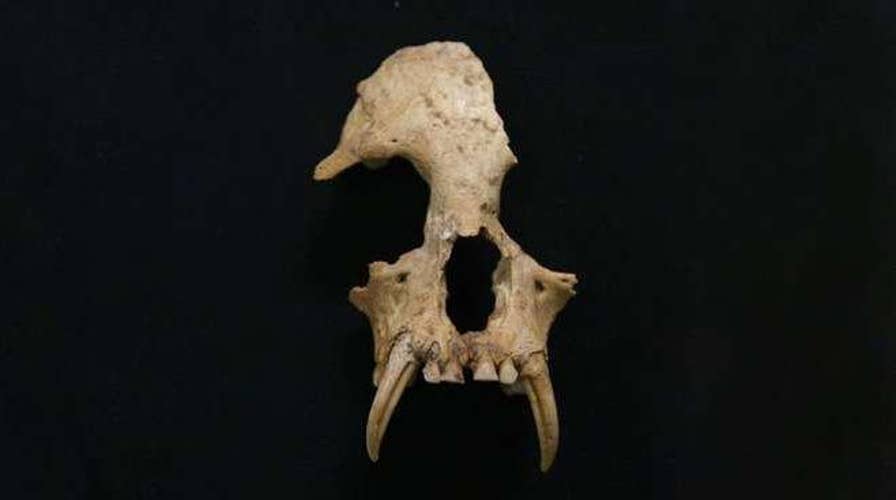A new extinct species of gibbon found in China
Scientists have made an interesting discovery in an ancient tomb in China’s Shaanxi province. They excavated bones of an entirely new but already extinct genus of gibbons.
Scientists studying bones unearthed from an ancient tomb in China’s Shaanxi Province have discovered the remains of a new but totally extinct species of ape.
The experts, who were led by the Zoological Society of London, made the incredible find in a 2,300-year-old burial chamber. The tomb may have belonged to Lady Xia, the grandmother of China’s first emperor Qin Shihuang, who oversaw the construction of the Great Wall of China and the famous Terracotta Army.
When the tomb was excavated in 2004 a number of animal remains, which included gibbon bones, were unearthed from 12 burial pits. By harnessing computer modelling, scientists were able to identify a new genus and species of gibbon. Named Junzi imperialis, records indicate that the gibbon probably survived until less than 300 years ago.
NEW ORANGUTAN SPECIES DISCOVERED, BUT COULD SOON BE EXTINCT, EXPERTS WARN
“This previously unknown species was likely widespread, may have persisted until the 18th century, and may be the first ape species to have perished as a direct result of human activities,” the researchers explain, in the study, which is published in the journal Science.
Scientists say that the discovery of the extinct ape species provides a stark reminder of the vulnerability of the world’s apes, particularly gibbons.
“Our discovery and description of Junzi imperialis suggests that we are underestimating the impact of humans on primate diversity,” said the study’s lead author Dr Samuel Turvey from ZSL’s Institute of Zoology, in a statement. “These findings reveal the importance of using historical archives such as the archaeological record to inform our understanding of conservation and stress the need for greater international collaboration to protect surviving populations of gibbons in the wild.”
SUDAN, THE WORLD'S LAST MALE NORTHERN WHITE RHINO, DIES FROM 'AGE-RELATED COMPLICATIONS'
ZSL warns that all the world’s apes are threatened with extinction today due to human activities. However, no ape species were thought to have become extinct as a result of hunting or habitat loss.
The researchers note that 73 percent of Asian primates are threatened, compared to 60 percent globally, adding that two species of gibbon have recently disappeared in China.
Two species of gibbon, including the white-handed gibbon, have disappeared in China, and all surviving Chinese species are currently classified as Critically Endangered by the International Union for the Conservation of Nature’s Red List of Threatened Species. “The Hainan gibbon (Nomascus hainanus), a species of gibbon found on Hainan Island in southern China, is now probably the world’s rarest mammal, with only 26 surviving individuals,” said ZSL, in its statement.
Seven primates, including the Bornean Orangutan and the Eastern Lowland Gorilla, are currently listed as critically endangered by the World Wildlife Fund. Bonobos and chimpanzees are classified as endangered, while the Black Spider Monkey is listed as vulnerable.
Last year scientists announced the discovery of a new species of orangutan in North Sumatra, Indonesia, but warned that it could soon be extinct.
Follow James Rogers on Twitter @jamesjrogers





















